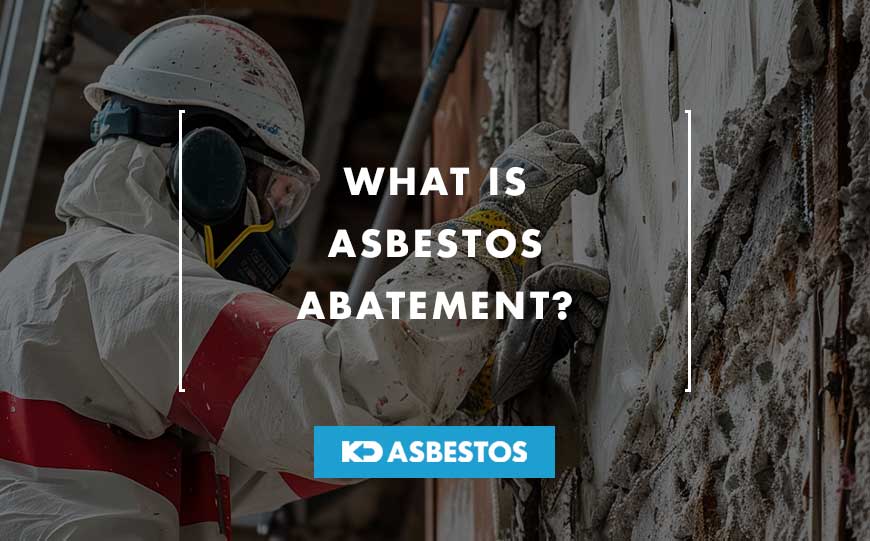
For decades, asbestos was a popular material in the construction industry due to its fire-resistant properties and durability.
However, it’s now widely recognized as a significant health hazard.
Asbestos fibres, when inhaled, can cause serious respiratory diseases, including lung cancer.
When dealing with asbestos, you may have heard the term ‘asbestos abatement’, but exactly what is asbestos abatement?
In this article, we’ll explore what asbestos abatement is, how it works, and its benefits and downsides.
We’ll also discuss how asbestos abatement differs from asbestos removal and why it’s important for protecting the health and safety of building occupants and workers.
Table of Contents
What is Asbestos Abatement?
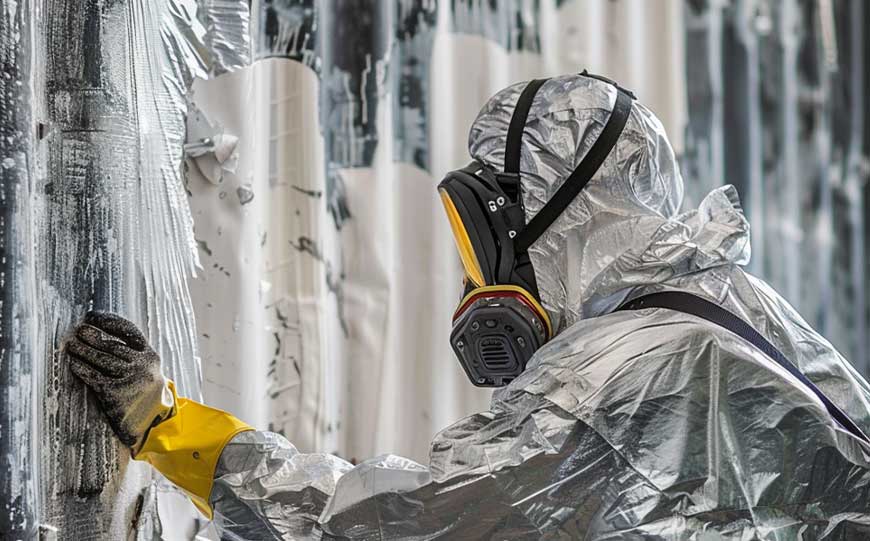
Asbestos abatement is the process of safely containing, removing, or encapsulating asbestos-containing materials (ACMs) to prevent exposure to harmful asbestos fibres.
When disturbed, asbestos fibres can become airborne and be inhaled, leading to serious respiratory diseases such as mesothelioma, and asbestosis.
The goal of asbestos abatement is to minimise the risk of exposure to asbestos fibres by identifying, containing, removing, or encapsulating materials containing asbestos.
This process is typically carried out by certified asbestos abatement professionals who have the training, experience, and equipment necessary to safely handle asbestos-containing materials.
By safely containing, removing, or encapsulating asbestos-containing materials, asbestos abatement helps to protect the health and safety of building occupants and workers.
It ensures that buildings containing asbestos are safe for occupancy and comply with health and safety regulations.
How Does Asbestos Abatement Work?
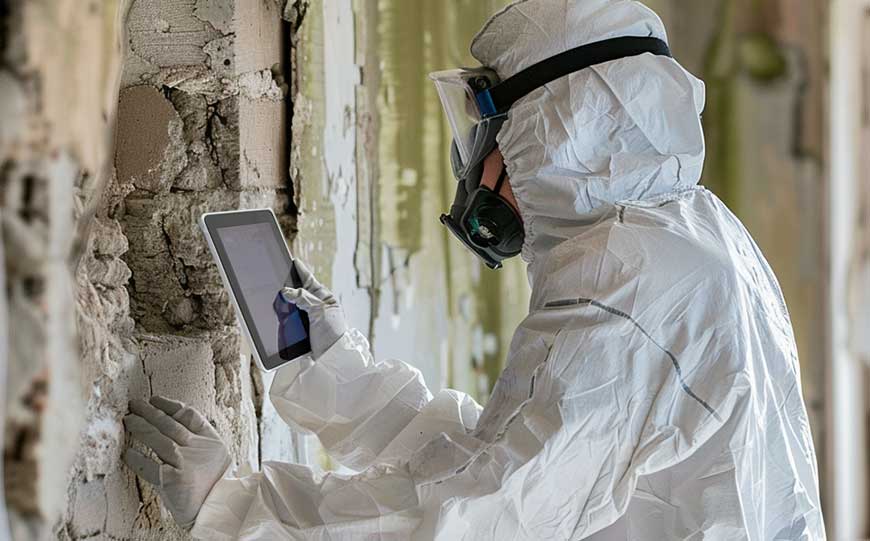
Asbestos abatement is a carefully planned and executed process designed to safely contain, remove, or encapsulate asbestos-containing materials to prevent exposure to harmful asbestos fibres.
Here’s how asbestos abatement works:
Assessment
The first step in asbestos abatement is to conduct a thorough assessment of the building to identify any ACMs present.
This typically involves a certified asbestos surveyor who takes samples of suspected materials for testing in a laboratory.
Containment
Once asbestos-containing materials have been identified, the affected areas are isolated and sealed off to prevent the spread of asbestos fibres.
This may involve sealing doors, windows, and ventilation ducts, and using plastic sheeting and negative air pressure systems to contain the area.
Removal or Encapsulation
Depending on the condition and location of the asbestos-containing materials, they may be either carefully removed or encapsulated to prevent the release of fibres.
Removal involves physically removing the ACMs from the building, while encapsulation involves applying a sealant or coating to the ACMs to prevent the release of fibres.
Disposal
Asbestos-containing materials that have been removed from the building are carefully packaged and disposed of according to regulations.
This may involve transporting the materials to a licensed hazardous waste disposal facility for proper disposal.
Clearance Testing
Once the asbestos abatement work is complete, clearance testing is conducted to ensure that the area is safe for reoccupation.
This involves testing the air and surfaces in the area for asbestos fibres to ensure that they are below safe levels.
How is Asbestos Abatement Different to Asbestos Removal?
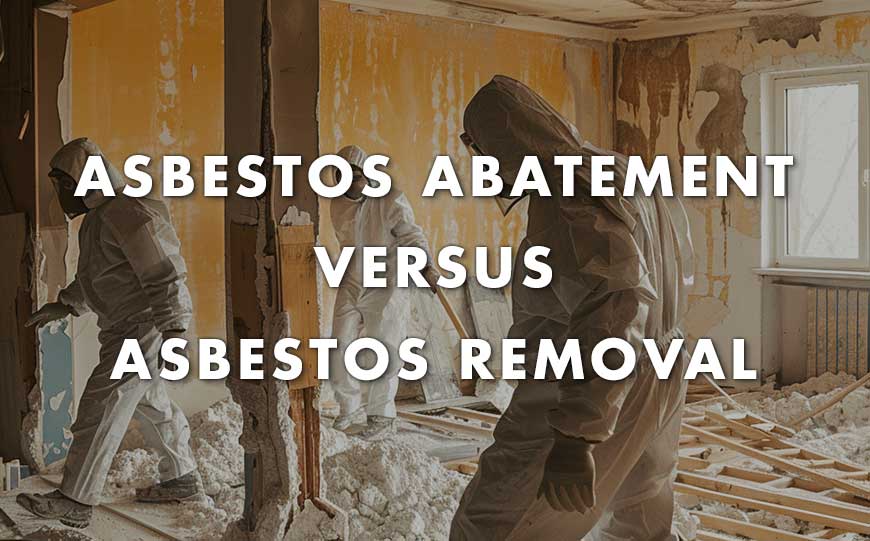
While the terms ‘asbestos abatement’ and ‘asbestos removal’ are often used interchangeably, there is a distinction between the two processes:
Asbestos Abatement
- Asbestos abatement is the process of safely containing, removing, or encapsulating asbestos-containing materials to prevent exposure to harmful asbestos fibres.
- The primary goal of asbestos abatement is to reduce the risk of exposure to asbestos fibres by containing, removing, or encapsulating ACMs in a safe and controlled manner.
- Asbestos abatement may involve sealing off affected areas, removing asbestos-containing materials, encapsulating ACMs with a sealant or coating, and disposing of asbestos waste according to regulations.
- The use of Asbestos abatement aims to make buildings containing asbestos safe for occupancy by reducing the risk of exposure to harmful asbestos fibres.
Asbestos Removal
- Asbestos removal is the process of completely eliminating asbestos-containing materials from a structure.
- The primary goal of asbestos removal is to completely eliminate all traces of asbestos from a building or structure.
- Asbestos removal involves physically removing all ACMs from the building and disposing of them according to regulations.
- Asbestos removal results in a building that is completely free of asbestos-containing materials.
What are the Benefits to Asbestos Abatement?
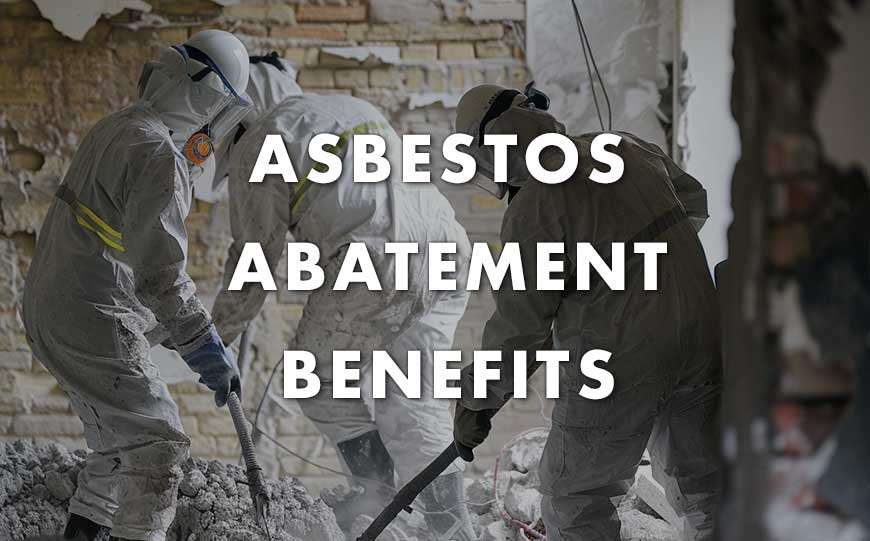
Asbestos abatement offers several important benefits for building occupants, workers, and the environment:
Reduced Health Risks
Asbestos abatement helps to minimise the risk of exposure to harmful asbestos fibres, which can cause serious respiratory diseases.
By safely containing, removing, or encapsulating ACMs, asbestos abatement protects the health and safety of building occupants and workers.
Legal Compliance
Asbestos abatement ensures compliance with asbestos regulations and standards, which are designed to protect public health and safety.
By following established asbestos regulations and procedures for asbestos abatement, building owners and managers can avoid potential fines, penalties, and legal liabilities associated with asbestos exposure.
Property Value
Asbestos abatement can improve the value and marketability of a property by addressing asbestos hazards and reducing the risk of liability.
Buildings that have undergone asbestos abatement are considered safer and more desirable for occupancy, leading to higher property values and increased market demand.
Environmental Protection
Asbestos can cause health risks if exposed to the outside environment.
Asbestos abatement helps to protect the environment by preventing the release of asbestos fibres into the air, soil, and water.
Proper containment, removal, and disposal of asbestos-containing materials reduce the risk of environmental contamination and minimise the impact of asbestos on ecosystems and habitats.
Peace of Mind
By addressing asbestos hazards through abatement, building owners, occupants, and workers can enjoy peace of mind knowing that their building is safe and free from asbestos-related risks.
This can lead to improved morale, productivity, and overall well-being.
What are the Limitations and Challenges with Asbestos Abatement?
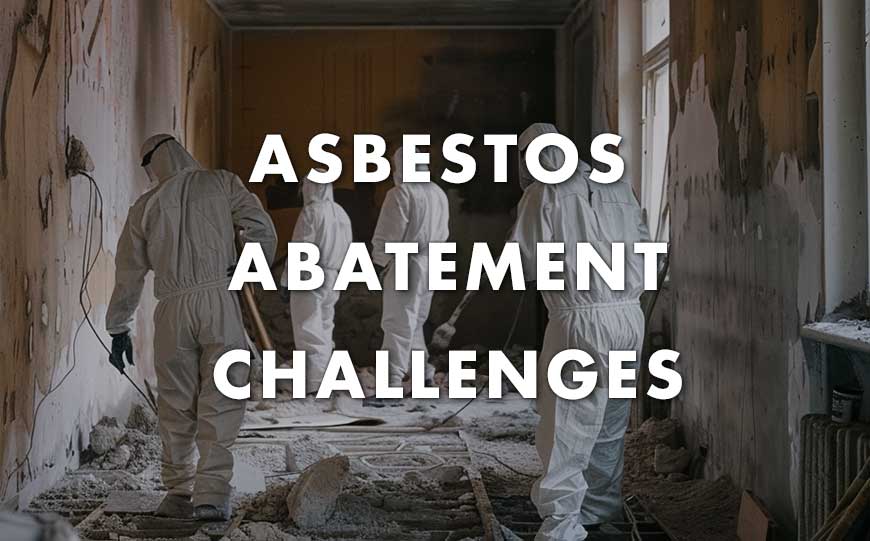
While asbestos abatement is an essential process for reducing the risk of exposure to asbestos fibres, there are several limitations and challenges to consider:
Incomplete Removal
In some cases, it may not be possible to completely remove all asbestos-containing materials from a building.
This may be due to the location or condition of the ACMs, accessibility issues, or other factors.
In such cases, asbestos abatement may involve encapsulating the ACMs to prevent the release of fibres rather than removing them entirely.
Hidden Asbestos
ACMs may be hidden or concealed within building materials, making them difficult to detect and identify.
This can pose a challenge during asbestos abatement, as it may be necessary to remove or encapsulate materials that are not readily visible or accessible.
Cost Considerations
Asbestos abatement can be expensive, especially for large-scale projects or buildings with extensive asbestos-containing materials.
The cost of abatement depends on factors such as the size and complexity of the project, the type and condition of the ACMs, and the methods used for abatement.
Cost considerations may limit the scope of abatement work that can be undertaken.
Disruption to Occupants
Asbestos abatement can be disruptive to building occupants and daily activities.
Depending on the scope of the project, abatement may require temporary relocation of occupants, closure of areas of the building, and disruption to normal operations.
This can lead to inconvenience, downtime, and loss of productivity.
Environmental Impact
Asbestos abatement can have environmental impacts, including the generation of asbestos waste and the potential release of asbestos fibres into the environment, leading to possible asbestos exposure.
Proper containment, removal, and disposal of ACMs are essential to minimise environmental contamination and protect ecosystems and habitats.
Conclusion
Asbestos abatement plays a crucial role in protecting the health and safety of individuals exposed to asbestos-containing materials.
While the process may be costly and disruptive, the benefits far outweigh the drawbacks.
Its importance in protecting health, ensuring safety, and complying with regulations cannot be overstated.
It is a worthwhile investment that not only protects the health and well-being of individuals but also contributes to the overall safety and integrity of buildings containing asbestos.
Therefore, investing in asbestos abatement is not just a prudent decision but a necessary one for the well-being of all.
For any asbestos queries, please get in touch with us here at KD Asbestos.